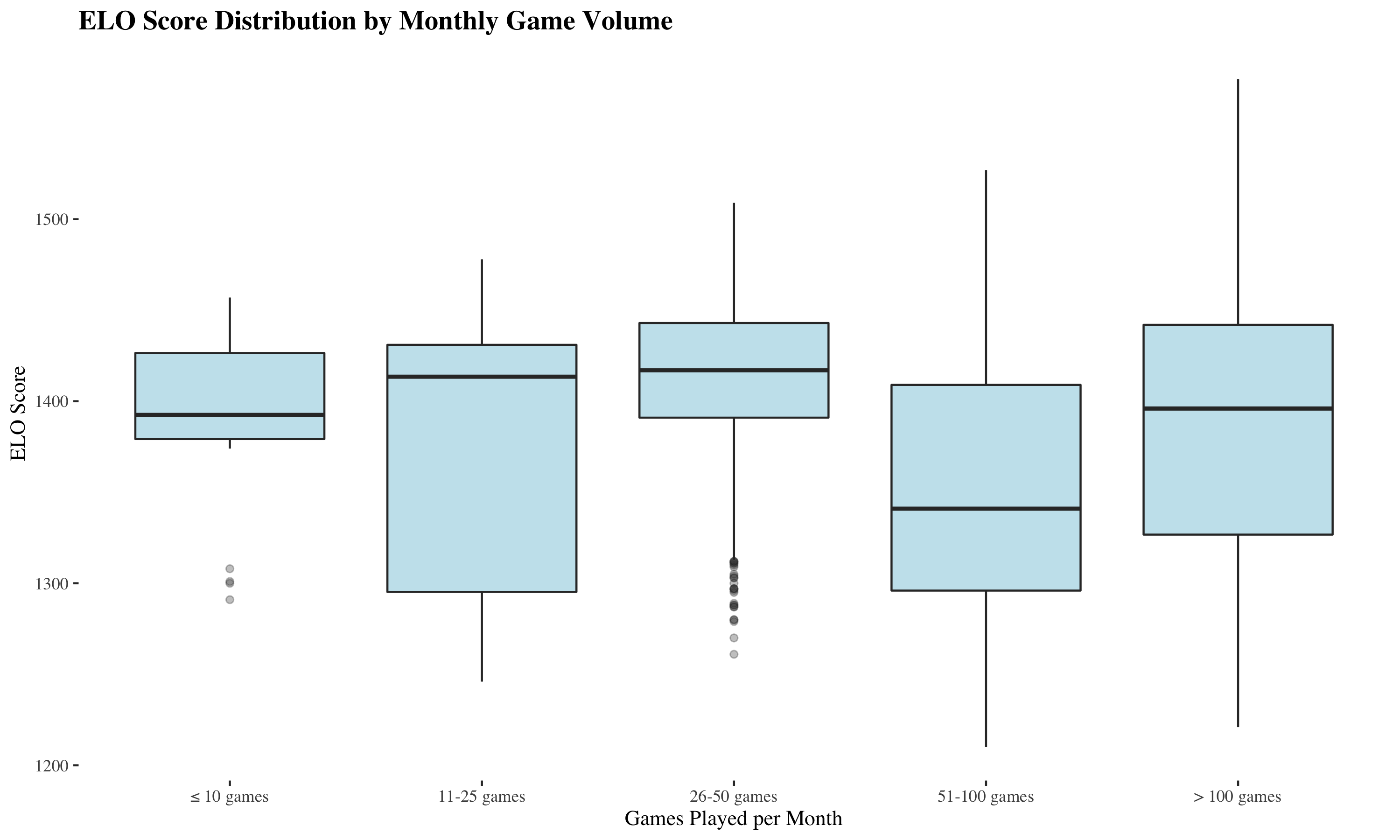My Chess.com Journey: A Data Analysis of Years of Play

After several years of playing chess on Chess.com, I decided to download my complete game history and analyze my patterns. With 4,836 games played between 2020 and 2025, the data reveals some fascinating insights about my chess journey.
The Activity Patterns: Peaks and Valleys
The most striking pattern in my chess activity shows distinct peaks and valleys. My chess obsession reached its zenith in mid-2020, when I was playing over 300 games per month, which is roughly 10 games per day!
This was followed by a dramatic decline when covid lockdowns were over, with activity dropping to almost zero for several months.
A second significant spike occurred in early 2023, reaching around 200 games per month, followed by another period of reduced activity. This pattern suggests that my chess playing follows a boom-and-bust cycle, likely correlating with periods of high motivation followed by burnout or competing priorities.
The Rating Journey: Progress Over Time

The time series of my rating reveals several interesting phases:
2020 - The Learning Phase: Starting around 800, with high volatility as the ELO algorithm is learning my skill levels.
2022 - Steady Improvement: A clear upward trend, reaching my peak around 1,500+ in early 2023.
2023 - The Peak: My strongest period, consistently playing in the 1,400-1,500 range with occasional spikes above 1,550. I think I took some lessons around this time and took it fairly seriously.
2024-2025 - Stabilization: More consistent performance in the 1,400-1,500 range, with less dramatic swings (albeit I did fall for a summer).
Rating vs. Volume: Does Practice Make Perfect?

The relationship between games played and rating shows a weak positive correlation (0.151). While there’s a slight upward trend suggesting that months with more games tend to have higher average ratings, the correlation is surprisingly weak. This challenges the simple “practice makes perfect” narrative.

Several observations emerge:
- My highest rating months (around 1,450-1,480) occurred with varying game volumes
- Some of my most active months (150+ games) actually coincided with lower ratings
- The scatter suggests that quality of practice matters more than quantity
Key Insights
Consistency Beats Intensity: My best ratings came during periods of moderate, consistent play rather than marathon sessions.
Diminishing Returns: The weak correlation between volume and rating suggests that focused practice is more valuable than grinding games.
Natural Cycles: My chess journey follows natural motivation cycles - periods of intense engagement followed by breaks appear to be sustainable.
Peak Performance Window: My sweet spot appears to be 50-100 games per month, where I maintain engagement without burning out.
The data tells a story familiar to many chess players: improvement isn’t just about playing more games, but about finding the right balance of practice, study, and rest. My chess journey continues, now informed by these insights about my own patterns and tendencies.